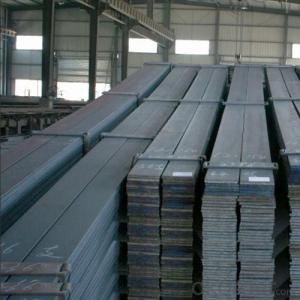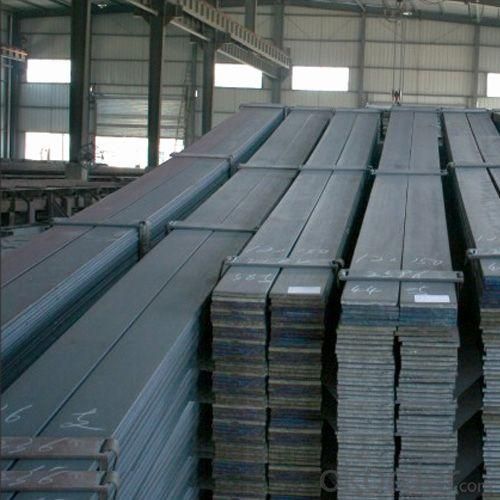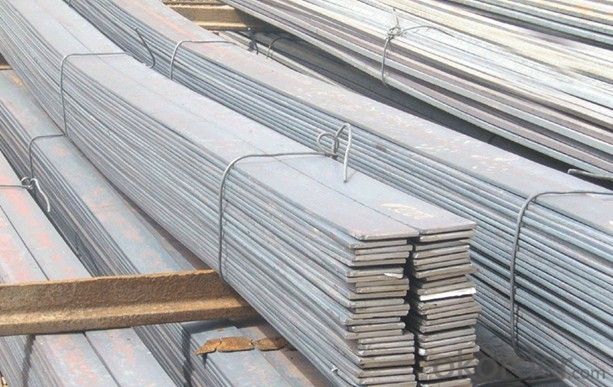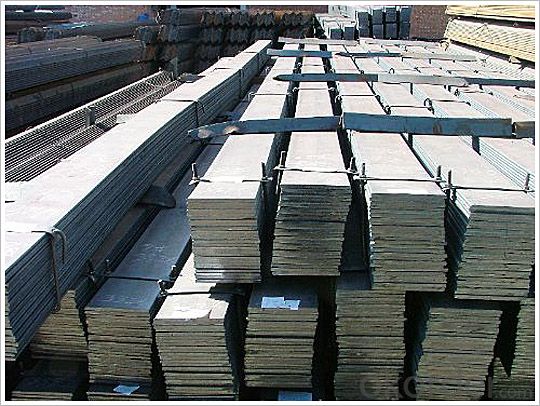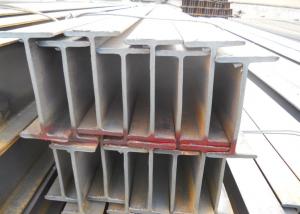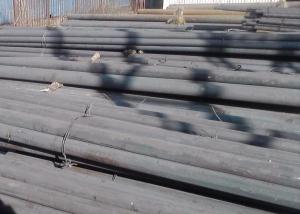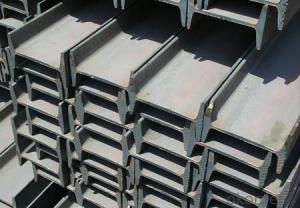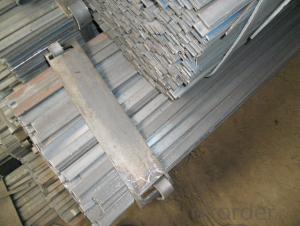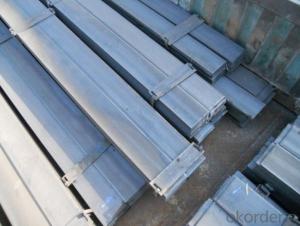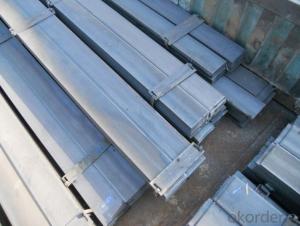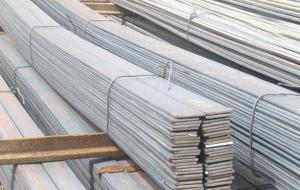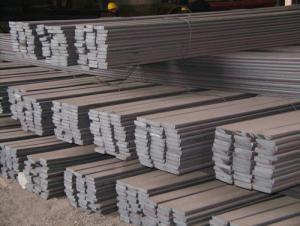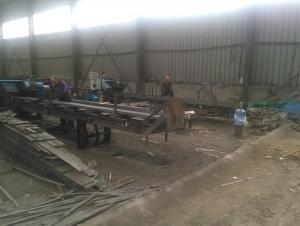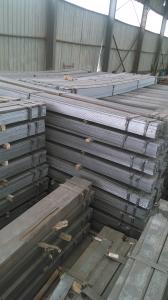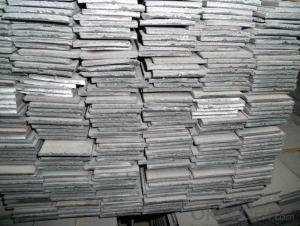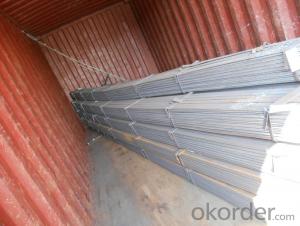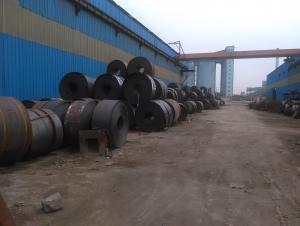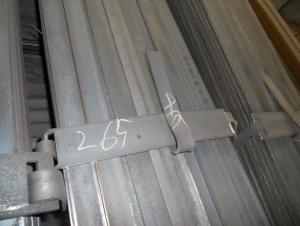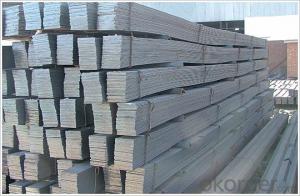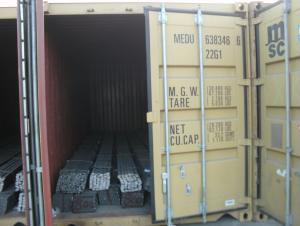Flat Bar Sizes Slitting Manufacture Steel Flat Bar
- Loading Port:
- Tianjin
- Payment Terms:
- TT OR LC
- Min Order Qty:
- 30 m.t.
- Supply Capability:
- 30000 m.t./month
OKorder Service Pledge
OKorder Financial Service
You Might Also Like
Steel Flat Bar For Many Sizes is used for manufacturing various types of springs and components, for the suspension mechanism in automobiles or the railways.With the short stress production line that can finish foundry and rolling in one process, we are able to produce dozens type of spring flat steel from 6*40mm to 20*150mm. This product is the best choice for springs and chains for car and agricultrure machine.
Product Description
Flat Bar Sizes Slitting Manufacture Steel Flat Bar
steel flat bar grade: A36, S235jr, St37-2, SS400, Q235, Q195
steel flat bar standard: ASTM, AISI, EN, DIN, JIS, GB
steel flat bar thickness:1.5mm-20mm
steel flat bar width: 10mm-1000mm
steel flat bar length: 6m, 9m, 12m or as your requirement.
steel flat bar technique: slitting hot rolled steel coil
Place of origin: Tianjin China (Mainland)
Products Advantages: 1. high quality
2. high dimensional accuracy
3. high utilization rate of material
4. saving cost price
General specification below:
Steel Flat Bar | |||
Width (mm) | Thickness (mm) | Length (m) | Theoretical Weight (kg/m) |
20 | 2.0 | 6/9/12 | 0.31 |
20 | 2.5 | 6/9/12 | 0.39 |
20 | 2.75 | 6/9/12 | 0.43 |
25 | 2.5 | 6/9/12 | 0.49 |
25 | 3.75 | 6/9/12 | 0.74 |
30 | 2.5 | 6/9/12 | 0.59 |
30 | 3.5 | 6/9/12 | 0.82 |
30 | 9.75 | 6/9/12 | 2.30 |
40 | 3.5 | 6/9/12 | 1.10 |
40 | 4.75 | 6/9/12 | 1.50 |
40 | 11.75 | 6/9/12 | 3.69 |
50 | 2.75 | 6/9/12 | 1.08 |
50 | 4.5 | 6/9/12 | 1.77 |
50 | 9.75 | 6/9/12 | 3.83 |
60 | 5.5 | 6/9/12 | 2.60 |
60 | 7.5 | 6/9/12 | 3.53 |
60 | 11.5 | 6/9/12 | 5.42 |
80 | 5.5 | 6/9/12 | 3.45 |
80 | 7.5 | 6/9/12 | 4.71 |
80 | 11.75 | 6/9/12 | 7.38 |
100 | 3.25 | 6/9/12 | 2.55 |
100 | 4.75 | 6/9/12 | 3.73 |
100 | 7.5 | 6/9/12 | 5.89 |
120 | 9.75 | 6/9/12 | 9.18 |
120 | 11.75 | 6/9/12 | 11.07 |
150 | 9.75 | 6/9/12 | 11.48 |
150 | 11.5 | 6/9/12 | 13.54 |
150 | 13.5 | 6/9/12 | 15.90 |
160 | 11.75 | 6/9/12 | 14.76 |
200 | 9.5 | 6/9/12 | 14.92 |
250 | 5.75 | 6/9/12 | 11.28 |
340 | 7.75 | 6/9/12 | 20.68 |
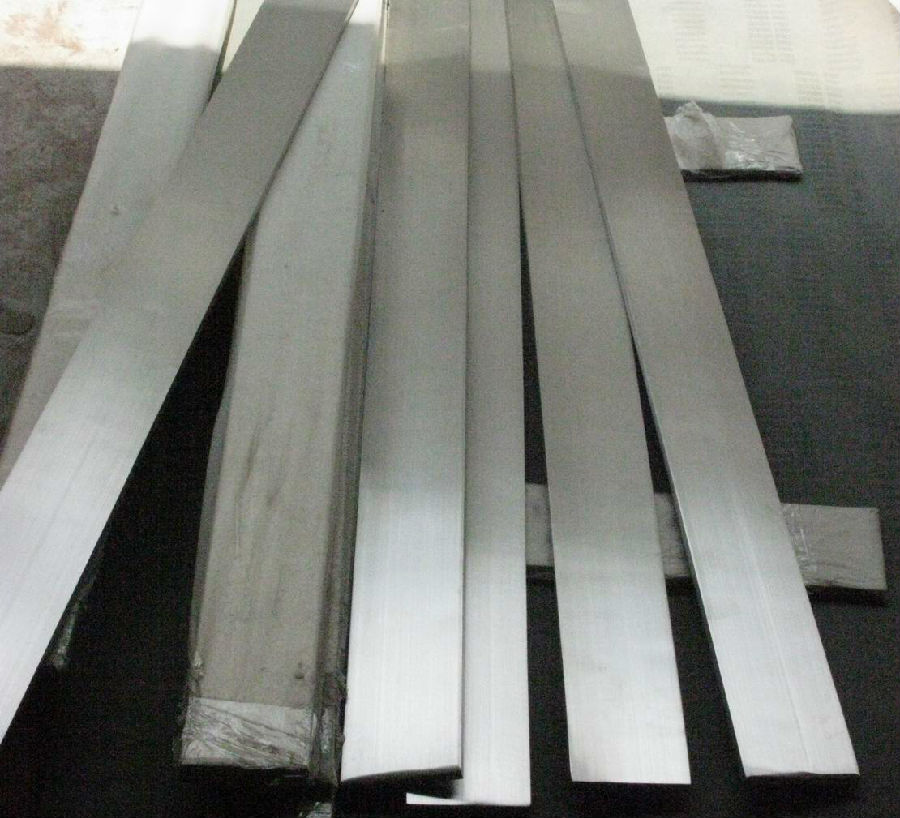
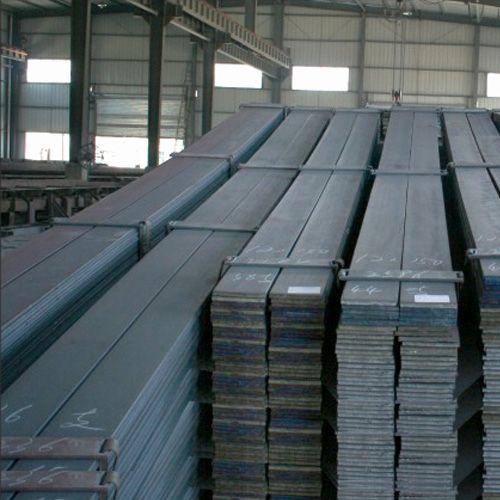
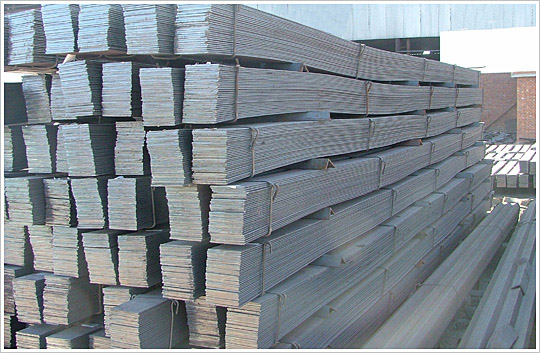
- Q: How do you protect steel flat bars from rusting?
- To protect steel flat bars from rusting, a common method is to apply a protective coating such as paint, varnish, or a rust-resistant primer. Additionally, using a corrosion inhibitor or regularly applying a rust-preventive oil can help safeguard the steel from moisture and oxidation. It's also important to keep the flat bars stored in a dry and well-ventilated area to minimize exposure to moisture.
- Q: How do steel flat bars compare to plastic flat bars?
- Steel flat bars have several advantages over plastic flat bars. Firstly, steel is significantly stronger and more durable than plastic. This means that steel flat bars can withstand heavier loads and are less likely to break or bend under pressure. Additionally, steel is highly resistant to wear and tear, making it a more long-lasting option compared to plastic, which can warp or degrade over time. Furthermore, steel flat bars offer better heat resistance than plastic. They can withstand higher temperatures without deforming or losing their structural integrity. This makes steel flat bars suitable for applications where heat exposure is a concern, such as in industrial or construction settings. In terms of aesthetics, steel flat bars also have an advantage. Their smooth and polished surface provides a sleek and professional look, while plastic flat bars may have a more rough or textured appearance. However, it is worth noting that plastic flat bars have their own advantages. Plastic is lightweight, making it easier to handle and transport. It is also corrosion-resistant, which can be beneficial in environments where exposure to moisture or chemicals is a concern. Additionally, plastic flat bars are non-conductive, making them suitable for electrical or electronic applications where the risk of electrical shock is a consideration. Ultimately, the choice between steel and plastic flat bars depends on the specific requirements of the application. While steel flat bars offer superior strength, durability, and heat resistance, plastic flat bars may be more suitable for certain situations due to their lightweight, corrosion-resistant, and non-conductive properties.
- Q: What are the different heat treatment processes for steel flat bars?
- Steel flat bars can undergo different heat treatment processes to enhance their mechanical properties and overall performance. Some commonly used processes for steel flat bars include: 1. Annealing: By heating the steel flat bar to a specific temperature and slowly cooling it to room temperature, internal stresses are relieved, ductility is increased, and machinability is improved. 2. Normalizing: This process involves heating the steel flat bar above its critical range and allowing it to cool in air. Normalizing refines the grain structure, improves mechanical properties, and enhances overall toughness. 3. Quenching and tempering: In this two-step process, the steel flat bar is rapidly cooled in a liquid medium, such as oil or water, to achieve high hardness. This is followed by reheating the quenched steel to a lower temperature to reduce brittleness and improve toughness. 4. Case hardening: Also known as carburizing, this process involves heating the steel flat bar in a carbon-rich environment to add carbon to the surface. Case hardening creates a hard outer layer while maintaining a softer and more ductile core, enhancing wear resistance and providing a tough surface. 5. Stress relieving: This process is used to reduce residual stresses in the steel flat bar that may have accumulated during manufacturing or other processes. By heating the steel to a specific temperature and allowing it to cool slowly, stress relieving minimizes distortion and improves dimensional stability. These heat treatment processes can be customized to meet specific requirements and desired mechanical properties, making steel flat bars suitable for various applications in different industries.
- Q: Can steel flat bars be used for manufacturing automotive parts or components?
- Yes, steel flat bars can be used for manufacturing automotive parts or components. Steel is a commonly used material in the automotive industry due to its strength, durability, and versatility. Flat bars can be shaped and formed into various components such as brackets, frames, supports, and structural elements in vehicles.
- Q: Can steel flat bars be used for manufacturing conveyor systems or belts?
- Indeed, conveyor systems or belts can be manufactured using steel flat bars. In conveyor systems, steel flat bars are commonly utilized as support structures or frames, offering a robust and long-lasting foundation for the belts to operate on. The sleek surface of the steel bars allows for seamless movement of the belts, guaranteeing efficient and dependable transportation of goods or materials. Moreover, steel's reputation for its strength and ability to withstand wear and tear makes it an optimal selection for conveyor systems requiring heavy-duty operations. All in all, steel flat bars possess the necessary attributes of strength, durability, and smoothness, rendering them a fitting material for the production of conveyor systems or belts.
- Q: Between the MEB and the power distribution cabinet with wire with the flat and why
- Even if there is no condition to make the ring flat steel belt, the ground terminal box is usually reserved for the access pipe. If multiple power line is recommended to see 500 2.7. central area substation, but also set the MEB based, attracted special line, and the reinforced layer access line; flat steel (copper) can save you, ha ha
- Q: Are steel flat bars resistant to fire or heat damage?
- Steel flat bars are highly resistant to fire and heat damage. Steel has a high melting point, making it capable of withstanding extreme temperatures without losing its structural integrity. This makes steel flat bars a reliable choice for applications where fire or heat exposure is a concern.
- Q: Can steel flat bars be used for reinforcing concrete?
- Yes, steel flat bars can be used for reinforcing concrete. They are commonly used as reinforcement in applications such as beams, slabs, and walls to improve the structural strength and durability of the concrete.
- Q: Can steel flat bars be used in the construction of railways?
- Yes, steel flat bars can be used in the construction of railways. They are commonly used as structural components in rail tracks, providing durability and strength to support the weight of trains and ensure stable and safe railway operations.
- Q: Are steel flat bars corrosion resistant?
- Yes, steel flat bars can be corrosion resistant depending on the type of steel used. Some stainless steel grades, such as 304 and 316, have excellent corrosion resistance due to their high chromium and nickel content. However, carbon steel flat bars are more prone to corrosion and should be protected with coatings or regular maintenance to prevent rust.
Send your message to us
Flat Bar Sizes Slitting Manufacture Steel Flat Bar
- Loading Port:
- Tianjin
- Payment Terms:
- TT OR LC
- Min Order Qty:
- 30 m.t.
- Supply Capability:
- 30000 m.t./month
OKorder Service Pledge
OKorder Financial Service
Similar products
Hot products
Hot Searches
Related keywords
